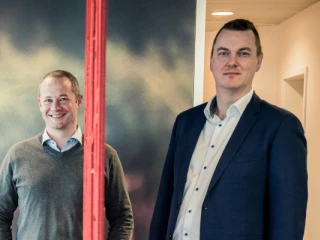Boosting change management leadership
A solid change management approach, according to both change managers, focuses on 4 topics. Today, the main points of attention in transformation programs are communication (the core message, what changes and why) and training (building competences and expertise regarding the new way of working). The third important topic is organizational readiness. Are corporate structures, processes and systems ready for the envisaged changes? Does the current organization match the new way of working? First, mapping the most significant impact of the new technology has to be finalized, to then prioritize and allocate what needs to be done to the respective responsible managers.
Caroline: “In our opinion, a lot of gains are to be had by looking into the fourth theme, which is change management leadership. With leadership, we on the one hand refer to identifying designated sponsors for the project, as well as leaders to support the transition at the respective organizational levels. Do they know what tools and methods to use and implement efficiently? Are they aware of resistance to the changes and how to tackle this?
Let us pick an example to clarify, since resistance can stem from all kinds of causes. A rational cause for instance, as in not understanding the change. An emotional driver, where the person in question is not in favor of the change and would rather stick to their habits. Or even resistance that comes from distrust. As a people manager, in order to progress, you need to be able to pinpoint the causes of resistance, how to uncover and get to the root of these causes and know tactical ways to lower the level of resistance. Resistance can even come from the project team; those team members, when a choice for a technology they are not familiar with has been made, can start to feel threatened and display resistance.”



